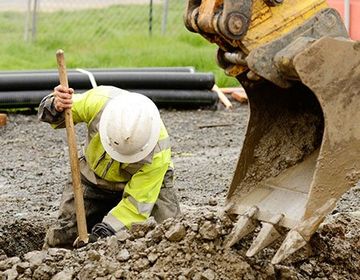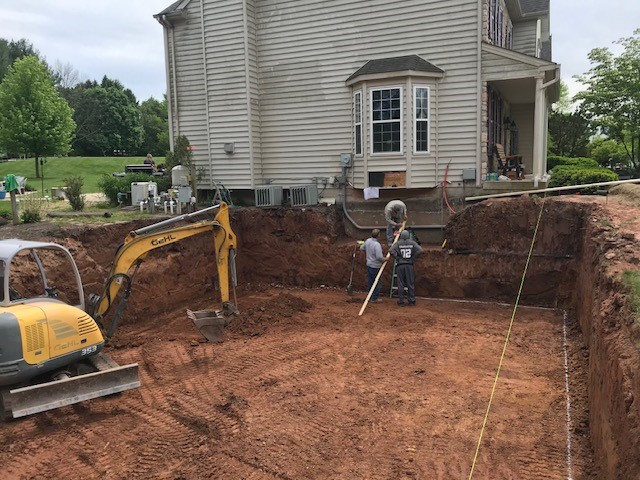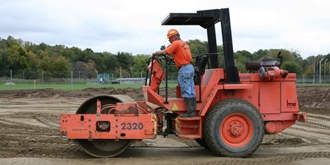In-Depth Exploration: The Science Behind Superior Excavation Practices
From ancient hand tools to modern hydraulic excavators, the advancement of excavation techniques has actually been a testament to human resourcefulness and technological advancements. What really sets premium excavation techniques apart is a deep understanding of geological principles, coupled with the application of sophisticated devices and approaches.
Evolution of Excavation Methods
Throughout background, the evolution of excavation methods has actually played an important role beforehand construction practices and archaeological explorations. From the fundamental devices used by our ancestors to the innovative equipment utilized in contemporary times, the development of excavation approaches has significantly changed exactly how we approach different projects.
In old times, hands-on labor with standard tools such as shovels, pickaxes, and wheelbarrows was the key method of excavation. This labor-intensive procedure limited the deepness and scope of excavations, frequently causing slow development and restricted access to specific websites. However, as civilizations advanced, so did the strategies and tools used for excavation.
The Industrial Revolution noted a transforming point in excavation methods with the intro of steam-powered equipment. This development reinvented the area, enabling faster and extra substantial excavations. In modern times, technology plays a critical function in excavation, with advancements like general practitioner systems, drones, and 3D scanning improving accuracy and performance in the area. The evolution of excavation techniques continues to shape the way we build, check out, and comprehend the globe around us.
Function of Innovation in Excavation

The integration of cutting-edge innovation has essentially revolutionized the field of excavation, boosting precision and efficiency to unmatched degrees - dump truck companies in ohio. One of the essential technical advancements that has actually significantly influenced excavation practices is the use of General practitioner systems.
Additionally, the arrival of 3D modeling and simulation software has structured the preparation process for excavation jobs. Operators and designers can currently visualize the entire excavation process before breaking ground, identifying prospective obstacles and optimizing process. Together with this, the implementation of drones in excavation activities has assisted in airborne studies, volumetric dimensions, and site evaluations with unequaled rate and precision.
Geological Concepts in Excavation
An understanding of geological principles is necessary for making sure the structural integrity and security of excavation websites. Geological factors play a critical duty in establishing the usefulness and security of excavation tasks.
In addition, the geological framework of the area, consisting of faults, fractures, and rock developments, need to be very carefully evaluated to identify possible risks and obstacles. Excavating near mistake lines or unsteady rock developments can result in instability and potential dangers. By conducting thorough geological studies and analysis, designers and excavators can develop approaches to alleviate threats and make sure the effective completion of excavation tasks. Ultimately, including geological principles right into excavation practices is vital for achieving risk-free, efficient, and sustainable outcomes.

Latest Devices for Excavation
In the world of excavation techniques, modern innovations in devices have actually changed the efficiency and precision of excavation procedures. Among the most recent devices making waves in the market is making use of drones furnished with sophisticated imaging technology. These drones can offer detailed airborne studies of excavation websites, providing real-time data on topography and possible dangers. This details help in much better planning and decision-making during the excavation procedure.
Another cutting-edge device getting popularity is the application of 3D printing browse around here technology for creating custom excavation try this website devices. This allows for the production of specialized devices that are customized to the details requirements of a job, enhancing performance and lowering downtime.
Additionally, advancements in materials scientific research have resulted in the development of more powerful and more long lasting excavation tools. septic ohio. Tungsten carbide-tipped excavator attachments, as an example, offer premium performance in tough ground conditions, improving productivity on-site
Science's Influence on Excavation Practices

Additionally, developments in products scientific research have led to the creation of more powerful, much more durable excavation devices and devices. The use of composite materials in shovels and diggers has improved their performance and long life, eventually raising efficiency on excavation websites. Furthermore, scientific study on soil auto mechanics and geotechnical engineering has provided useful insights into dirt habits, permitting excavation experts to make enlightened decisions pertaining to excavation methods and dirt stablizing methods. Overall, scientific research remains to drive advancement and improvement in excavation methods, making excavation tasks more effective, cost-effective, and sustainable.

Conclusion
To conclude, the advancement Home Page of excavation methods has been considerably influenced by advancements in modern technology and a much deeper understanding of geological principles. The newest tools and tools made use of in excavation have actually enhanced efficiency and accuracy in the field. The application of scientific expertise has actually considerably enhanced excavation techniques, resulting in much more sustainable and reliable techniques for excavating numerous sorts of products.
In the world of excavation methods, contemporary developments in tools have changed the performance and accuracy of excavation processes. By leveraging clinical concepts, the excavation market has been able to significantly improve performance, precision, and security in excavation processes. GPR permits excavation groups to non-invasively scan and map subsurface structures, energies, and possible dangers, enabling them to plan excavation tasks with higher precision and lowered threat of crashes.
In addition, scientific research on dirt auto mechanics and geotechnical engineering has actually offered valuable understandings into soil habits, permitting excavation specialists to make educated decisions pertaining to excavation techniques and soil stablizing techniques. Generally, science proceeds to drive advancement and improvement in excavation techniques, making excavation projects extra efficient, cost-efficient, and sustainable.